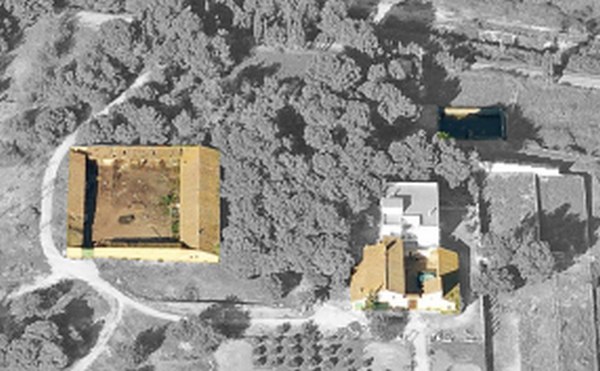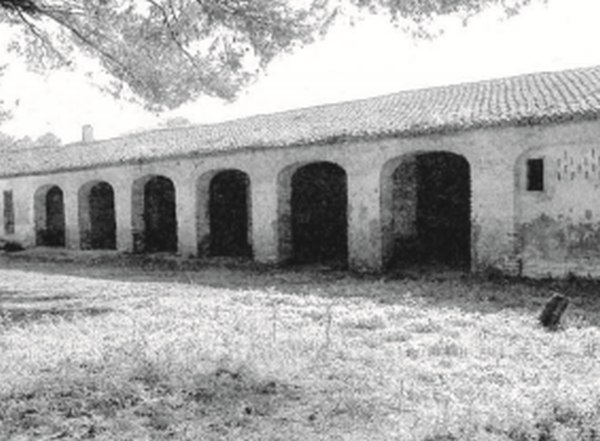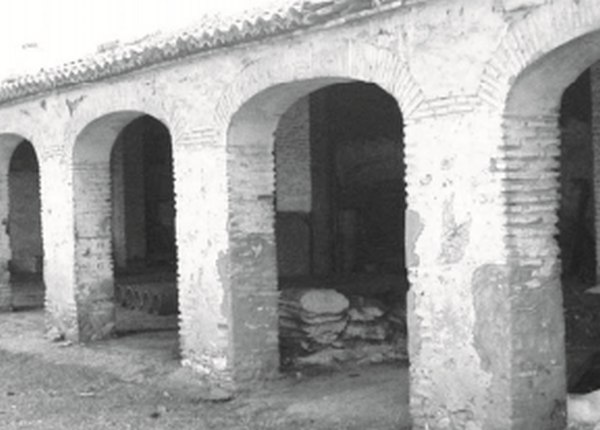Laugh from El Fondo
This riurau is located in Mas del Fondo, the municipality of which is found in several municipalities; the riurau is in the municipality of Valencia, departure of Massarrojos. The place where it is located, meets special characteristics that have led to it being preserved in excellent condition.
It is accessed by a dirt road that crosses a forest and fields currently of orange trees (formerly vineyards) and in it is located the riurau and the farmhouse. Near the farmhouse are the trenches of the Puig-Carasols defensive line.
This river is the only example of this architecture in the region of l'Horta Nord and probably the largest in the Valencian Community. It is fourteen meters deep in gable, east-west orientation and opening of fourteen arched eyes on each of its two faces, and two eyes, also in arch, on each of its lateral faces. The structure is built in tile with tile roof on reeds in the eighteenth century.
In the late nineteenth century a large courtyard was achieved in the western area through the construction of three other minor riuraus. In 1915 the inner eyes were blinded and the riurau was used as a warehouse for dry products, later it was used again for drying raisins thanks to a revitalization of the trade of this product.
In a partial rehabilitation carried out in 1940, the reed was replaced by tile in some areas. Manuel Porres, owner of the Teatro Trianon Palace, later Teatro Lirico de Valencia, incorporated iron columns from the theatre into the river when it was transformed into a cinema in the 1940s. The outer eyes at both ends have been blinded and the resulting rooms are used as cabins and warehouses. The floor is still the original one, of fluted tile, and numerous bases of the seranda are preserved, in which the rods for the sails were placed. Different instruments related to farming are also preserved, some of them of great ethnological value.
The primitive riurau is currently used to house these instruments with ethnological value; The blinded ends are used for various purposes by pastors and for the preparation of guided tours carried out by schools. The yard and later riuraus are currently used for the breeding of the Guirra sheep or "red-nosed", the only sheep native to Valencia, which was in danger of extinction; of the 4173 existing in 2007, more than 2000 were in Mas del Fondo.
The farmhouse is a large construction, of great solidity, which preserves elements that demonstrate the defensive character that it must have had in some periods. The original farmhouse has been dated to the late eighteenth century. The back was demolished and a chalet was built in the early twentieth century, which has subsequently been modified.
Despite the modifications indicated, the primitive riurau is in an excellent state of conservation, it is of an immediate reading and it would be very easy to recover the blinded eyes. The fact that it has been endowed with an interior patio thanks to the construction of new riuraus, and especially the one that is currently in use with a relevant ethnological and environmental function, as well as the conservation of the farmhouse, in very good condition, and that it also maintains productive activity, confer an added value to theRiurau building, which in itself deserves to be declared a BIC.



Dades bàsiques
Sat Masias Diseminadas, 1
46112, Valencia